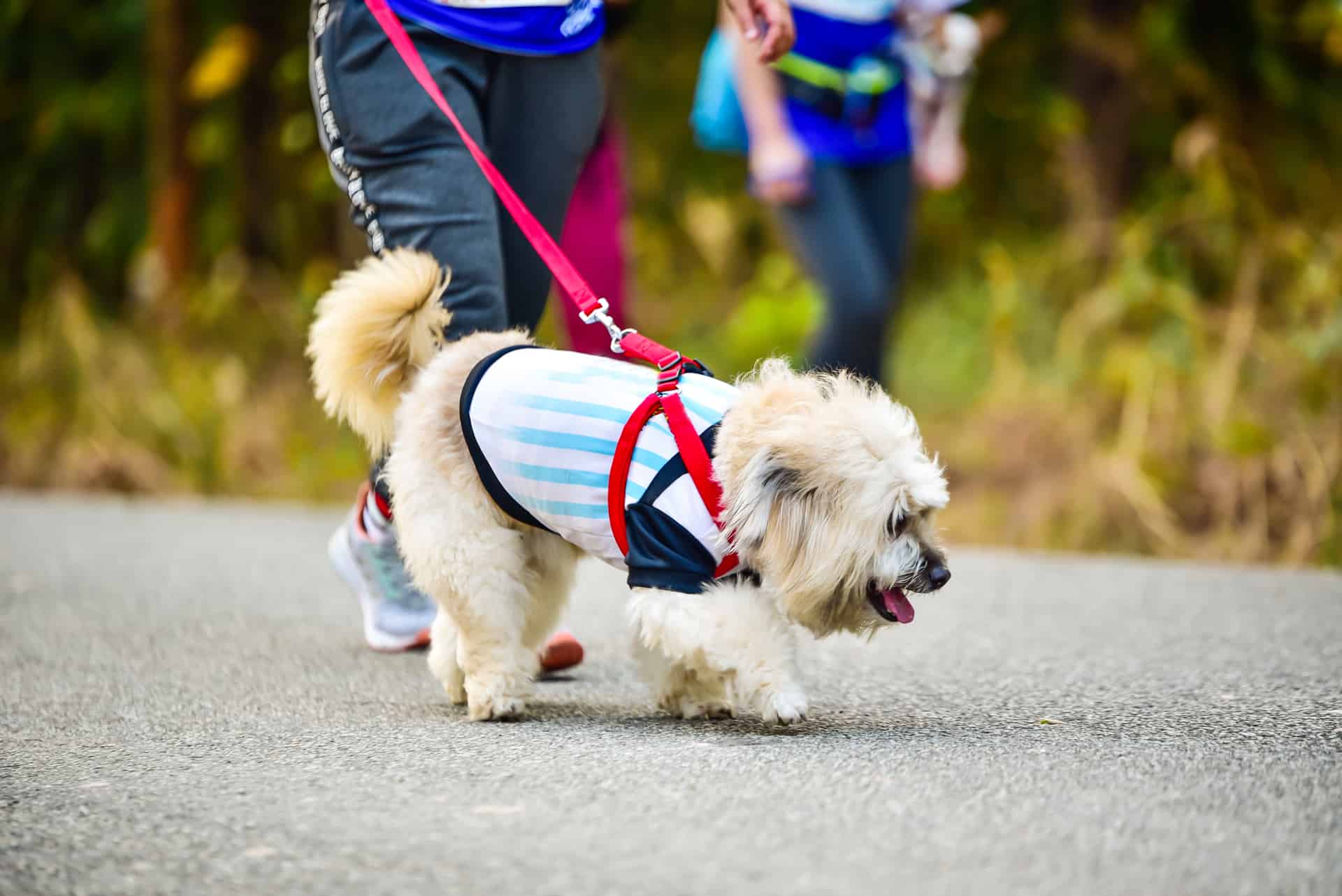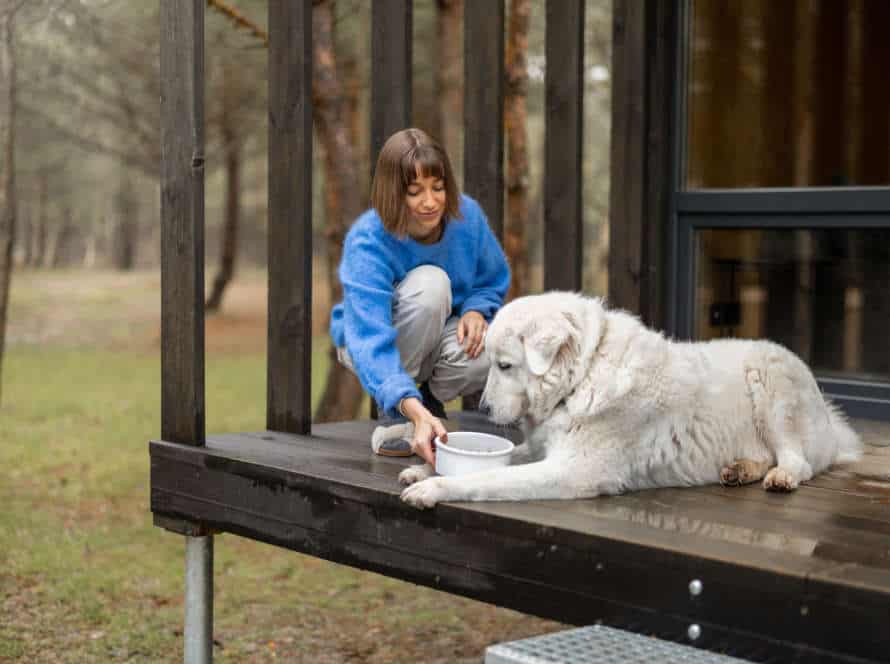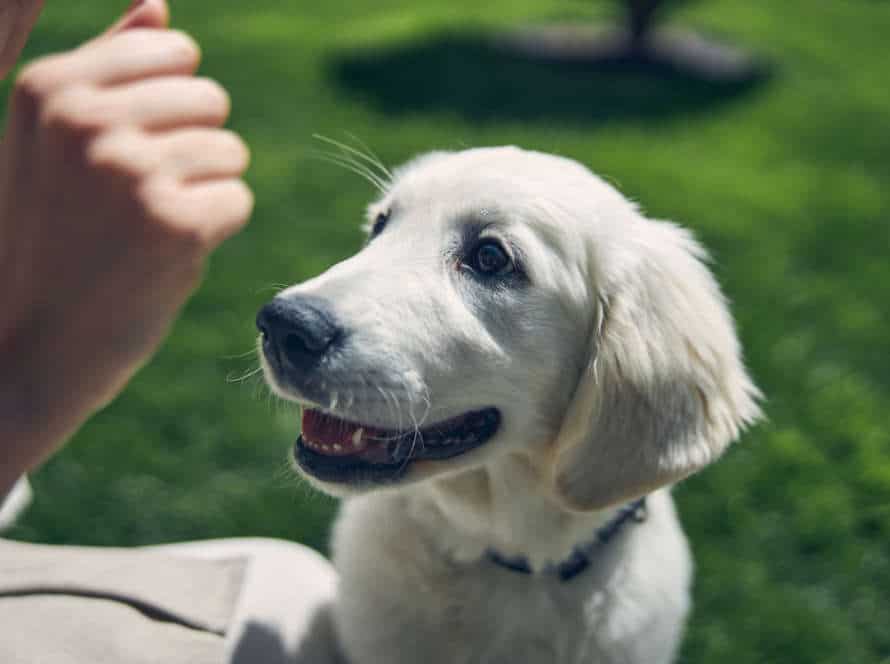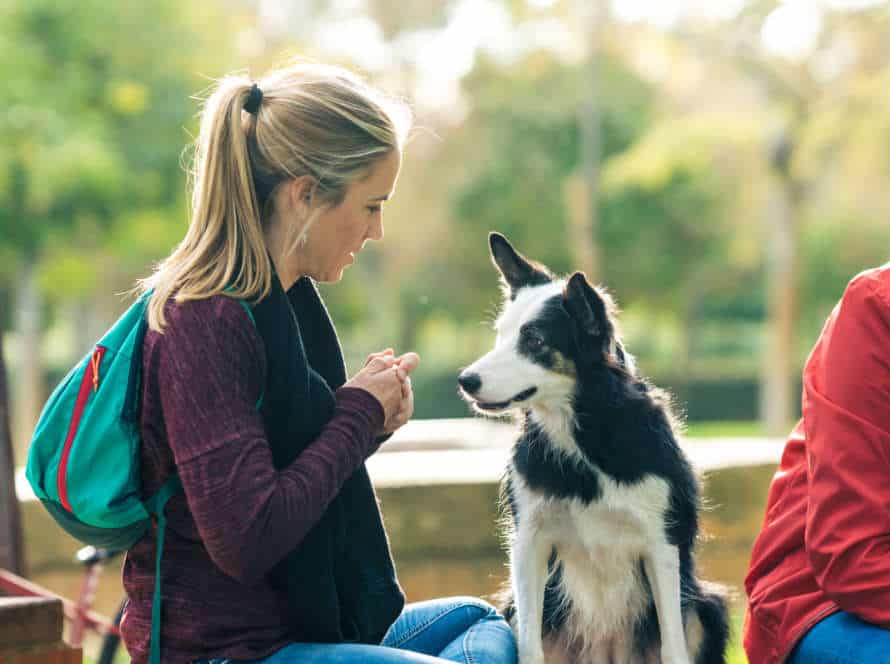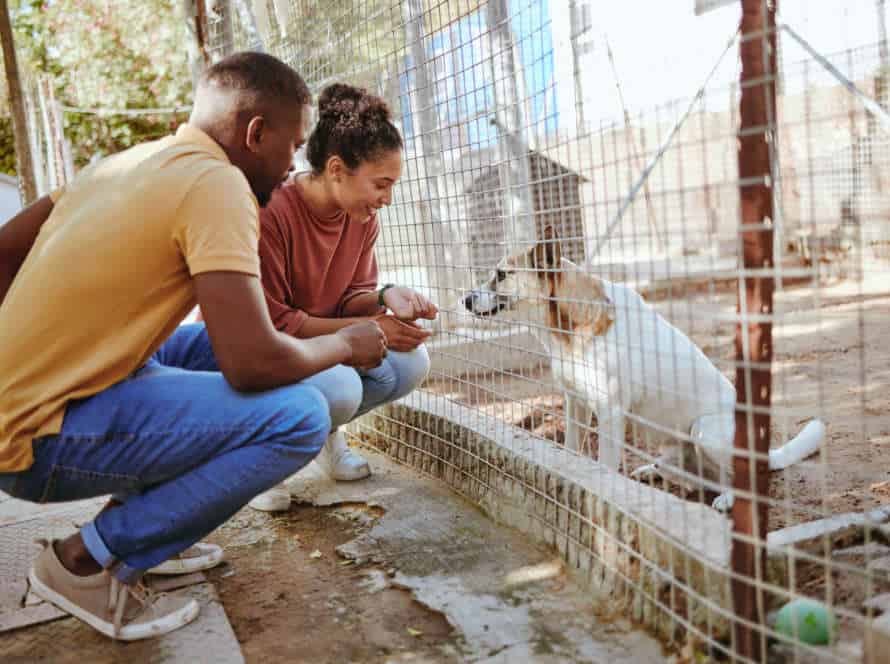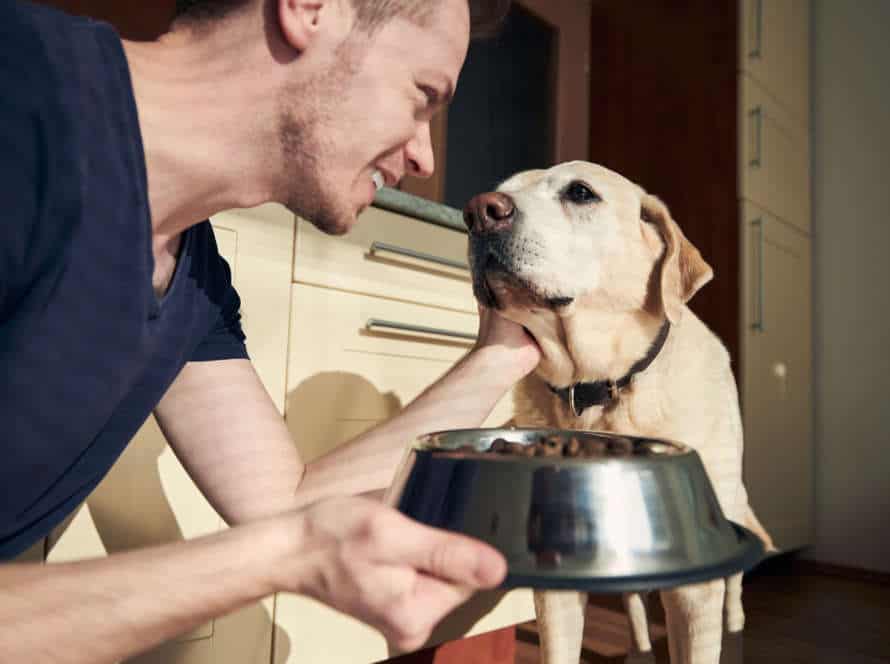Unlocking Your Dog’s Full Potential Through Exercise
Exercise can transform your pup’s life and personality. Here’s how:
Physical Benefits: It can prevent obesity, improve their heart health, and make their joints and muscles stronger. Resulting in a longer and healthier life.
Mental Benefits: Stimulating their brain, reducing stress and anxiety, and improving their mood and behavior.
Types of Exercise: Walking, hiking, swimming, fetch, agility games, obedience training.
Guidelines: The amount and type depend on their age, breed and health. Talk to your vet to make a safe and effective exercise plan.
Pro-tip: Make it fun! Variety, toys and positive reinforcement training can help. Exercise can do wonders for both you and your pup’s physical and mental wellbeing.
The Importance of Exercise for Your Dog
Exercise is a must for dogs of all sizes and ages! It keeps them healthy, and boosts their mood. Daily exercise and playtime can help your pooch reach its full potential. Plus, it leads to a lifetime of joy and wellbeing.
Physical Benefits of Exercise for Dogs
Exercise is key for keeping dogs’ physical and mental wellbeing in check. It offers them lots of advantages that make their daily lives easier. Here are some physical benefits of exercise for dogs:
- Enhances cardiovascular health: Exercise helps to strengthen your pup’s heart, plus their blood circulation and stamina.
- Aids weight management: Doing regular exercise helps dogs stay at a healthy weight, decreasing the danger of obesity and illnesses linked to it.
- Grows muscles and strengthens bones: Exercise encourages muscle growth and keeps bone density, which is important for healthy mobility as they age.
- Enhances immune function: Doing regular exercise helps to build up a strong immune system, reducing the risk of illnesses and infections in dogs.
- Improves sleep: Exercise can help dogs sleep better at night, since they will have exhausted energy and burned calories throughout the day.
Consistent exercise can unlock your pup’s full potential, giving them a healthy and happy lifestyle.
Mental Benefits of Exercise for Dogs
Exercising is not only vital for physical health in canines, but also for mental health. Regular exercise can reduce anxiety and depression, as well as help them reach their full potential. It keeps them happy and active.
Benefits of exercising a dog include a better mood, less anxiety, and socializing with other dogs and people. Moreover, it can stop boredom and destructive behavior that comes from frustration.
Exercising can mean various things, such as walking, running, playing or training classes. Dogs should get around 30 minutes to 2 hours of exercise daily, depending on the breed and energy levels. This provides mental and physical stimulation, and keeps them healthy and occupied. Exercise is very important for every dog, so owners should make time to do activities with their furry friends.
Pro tip: Do different physical activities to give your pup variety and avoid boredom.
The Link Between Exercise and Good Dog Behavior
Exercise is super important for maintaining your pup’s health, happiness, and obedience. Without physical activity, your dog could act out, be anxious, and even get fat. A dog that exercises has an outlet for their energy, and this makes them easier to teach and handle.
Here’s how exercise helps your pup:
- Stops chewing and digging.
- Helps with weight and stops obesity.
- Strengthens bones and muscles, and improves heart health.
- Relieves stress and anxiety.
To get the most out of your doggy’s exercise, do things that fit their needs and abilities. Regular walks, fetch, obedience classes, agility training—these are all great ways to help your dog reach their full potential with exercise.
Types of Exercise Suitable for Dogs
Exercise is essential for optimizing your pup’s potential! It keeps them healthy, fit, and alert. Plus, it provides mental stimulation and helps with behavior issues.
Let’s explore the many different types of exercise for dogs. From running to swimming – there’s something for every doggo!
Walking and Hiking With Your Dog
Walking and hiking with your pup is a wonderful way to create a strong bond and keep both of you fit. But, not all sorts of exercise are good for dogs. It’s very important to understand how to get your dog’s best performance through exercise.
Here are some exercises that are suitable for dogs:
- Walking: This is an easy and convenient way to exercise your pup. It stimulates their mind, can make them feel better, and also helps strengthen their muscles.
- Hiking: Taking your pup on hikes is a great way to help them challenge themselves mentally and physically. It gives them the opportunity to explore new surroundings, bond with you, and get a good workout.
- Swimming: Swimming is a gentle kind of exercise that can build up endurance, strengthen muscles, and help with joint health. It’s especially beneficial for dogs with joint issues or arthritis.
- Agility training: Agility training involves teaching your pup to get through an obstacle course. It helps with their balance, coordination, and mental agility.
By including these exercises in your pup’s schedule, you can maximize their potential and help them lead a healthy lifestyle.
Fetch and Other Games for Dogs
Playing games with your pup can raise their physical activity, stimulate their minds, and help you two bond. Here are some ideas:
- Fetch: Throw a ball, stick, or toy, and have your pup retrieve it. This develops agility and cognitive thinking.
- Hide and Seek: Hide, and ask your doggo to find you. It boosts obedience and helps them use their sense of smell.
- Tug of War: Pull on a rope, toy, or stick with your pup. This builds trust and strengthens the relationship.
- Nose Work: Put treats or toys around the house or yard and have your pup sniff them out. This is a great mental exercise, plus they learn the “Leave it” command.
A routine of mental and physical activity is great for pups. Pro Tip: Do something with your pup for 20 minutes every day.
Swimming for Dogs
Swimming can be beneficial for dogs! It gives them physical and mental benefits. But, not all dogs are natural swimmers, so you need to consider a few things before introducing your pup to the pool.
Benefits of swimming for dogs:
- Low-impact exercise.
- Keeps them in great shape.
- Gives them an outlet for energy.
- Reduces stress.
Tips for introducing your dog to swimming:
- Start in shallow water.
- Get a swim vest or flotation device.
- Reward them for good behaviour.
- Take plenty of breaks and give water.
- Consider taking a class or working with a trainer.
Pro Tip: Always supervise your dog while swimming and watch for signs of distress or fatigue. With the right training, swimming can be an enjoyable activity for all dogs.
Factors to Consider When Exercising Your Dog
Exercising your pup is key to its health and joy! But, there are certain things to think of when exercising it. Let’s investigate the factors to consider when giving your doggo some activity.
Your Dog’s Breed and Age
The breed and age of your pup are key when creating their exercise plan. Different breeds require various activities due to their size, energy levels, and traits. For instance, a hunting breed may need activities like retrieving and swimming, while a toy breed might be content with agility and obedience games.
Age also matters. Puppies need play and exercise to build their muscles and socialize, but senior dogs need low-impact exercises like walks and stretching to avoid injury and ease joint pain.
Before beginning an exercise routine for your canine, be sure to talk to your vet to make sure their needs are met without risk of injury.
Your Dog’s Health and Fitness Level
Dogs, like us, need routine exercise to stay fit and healthy. But, there are some points to consider before exercising your pup. Age is key: younger dogs need more exercise than older ones. Breed is also important. Some breeds need intense exercise, some just moderate. If your pet has a health issue, check with your vet first. Also, be mindful of weather. On hot and humid days, limit exercise-dogs can overheat quickly. By considering these factors, you can help your pup reach their full exercise potential, boost their health, and strengthen your bond.
The Weather and Time of Day
Exercising your pup? Consider the weather and the time of day. Weather-wise, watch out for heat, humidity, and wind. Hot and humid can cause overheating or dehydration, while cold can lead to hypothermia. Best to exercise early morning or late evening. Time-wise, be aware of your pup’s energy level and adjust exercise intensity accordingly. High-energy dogs need more exercise, while seniors or low-energy pups need low-impact routines. Keep these factors in mind and your pup will be in top shape!
Pro tip: Always bring water and a bowl – no matter the forecast.
Designing an Exercise Routine That Works for You and Your Dog
Exercising with your pup is essential for a healthy and happy life! It can transform them from unruly to a content companion. Working out isn't only good for their physical fitness, but also their mental stimulation.
Here are some tips on how to get the most out of exercising with your pup and create an effective routine.
Setting Goals for Your Dog’s Exercise Routine
Design a tailored exercise routine for your pup and unleash their full potential! Here are some tips:
- Check their current physical condition & energy.
- See what type of exercise they like best – walks, runs, dog sports?
- Set realistic goals and make progress gradually.
- Vary exercises, add physical & mental stimulation.
- Monitor progress, adjust when needed.
You’ll have an enjoyable and challenging routine that not only boosts their health but also increases the bond between you and your dog.
Pro tip: Don’t forget to include rest days for their muscles to recover and stay injury-free.
Choosing the Right Type and Frequency of Exercise
Choosing the perfect type and frequency of exercise is vital to make a successful workout routine that’s great for you and your pet. Consider their age, breed, character and state of health when picking an exercise plan for your pup. Find activities that challenge them in mental, physical and emotional ways.
Brisk walking, running, hiking, swimming, fetching and agility training are some of the best forms of exercise for dogs. Start off slowly and with low-intensity exercises. Gradually increase time and intensity as you progress.
Be consistent with the exercise routine. Make a schedule that works for both of you, and stick to it. Keeping the same time for exercise every day can help create a healthy habit and keep the routine on track.
Monitor your dog’s response to the exercise plan and adjust it to suit their needs. Remember, exercise should be fun for you and your pup. Get creative and help them reach their full potential!
Incorporating Your Dog’s Exercise Routine into Your Schedule
Incorporate your pup’s workout into your own agenda. This is a must for your pooch’s wellbeing, as well as yours! Here are some tips to design a workout that works for both you and your pup:
- Assess their needs based on breed, size, age, and health condition.
- Make a list of activities you both enjoy; like hiking, running, or playing fetch.
- Set a schedule and stick to it. Make sure to include a variety of activities to avoid boredom.
- Think about buying equipment like a dog harness or running leash. This makes exercising safer and easier.
- Remember to warm up before exercising with your dog. Give them water and rest breaks, too.
- Pro tip: By including your pup’s exercise routine in your own, you are not only taking care of them but also creating memories together!
Tips for Maximizing Your Dog’s Exercise Experience
Exercise is essential to keep your pup in good health! To get the most out of your canine’s daily activities, here are some strategies you can use.
- Tip 1: Choose the right activity for your pup.
- Tip 2: Set time limits.
- Tip 3: Provide enrichment for your pet.
With these tips, you’ll ensure your pooch is getting the physical benefit of their daily exercises.
Keeping Your Dog Safe During Exercise
Stay vigilant to keep your pup safe while exercising. Here are tips for maxing out their workout experience:
- Start slowly and progress to harder levels. Begin with shorter walks or runs and increase length/difficulty as your pup’s fitness builds.
- Give lots of water breaks to keep ’em hydrated.
- Protect their paws with booties or paw wax from hot pavement and rough terrain.
- Monitor signs of exhaustion or distress – panting, drooling, stumbling.
- Also, add brain games like fetch and treat-hiding to their routine. Stimulating their mind and body leads to a more fulfilling exercise experience.
Making Exercise a Fun and Engaging Activity
Have some fun with your pup while exercising! Here are some tips to make it a great experience:
- Mix it up – Alternate between walking, running, fetch and swimming.
- Make it challenging – Increase the intensity and duration of exercise gradually, so they don’t get too exhausted.
- Use toys & treats – Use toys and treats to keep your pup engaged and motivated.
- Training time – Exercise can be a great chance to do some training. Hide-and-seek and walking on a leash are great activities!
- Pro tip – Pay attention to your pup’s physical limitations, and ask your vet before starting something new. Make sure it’s fun for both you and your pup!
Troubleshooting Common Challenges with Dog Exercise
Exercising your pup is vital for being a responsible pet parent. But, challenges can come up while attempting to get your furry pal active. Here are some tips for dealing with problems and making the most of the exercise experience:
- If your dog is easily distracted: Choose an area that’s quiet and not busy to do the exercise. This can help your pup focus on the physical activity instead of other things.
- If your dog is over-excited: Incorporate obedience training into the routine to give them self-control and make them more relaxed during the activity.
- If your dog is quickly tired out: Start slow and increase the exercise intensity based on the energy level of your pup. If you see heavy panting or fatigue, lower the intensity and frequency of the exercise.
- If your dog is not interested in exercise: Change the routine and make it fun with different games, toys or environments.
Also, make sure to keep your dog hydrated and look out for any signs of injury or discomfort.
Pro Tip: Being consistent is the key to getting the most out of exercise with your pup and it creates a strong bond between you two.
Conclusion and Next Steps for Expanding Your Dog’s Exercise Routine
To finish, expanding your pup’s work out routine beyond the occasional walk has lots of advantages. These include: more energy, a more relaxed attitude, and a better-off pooch. It may seem hard to create an interesting exercise routine, but with a bit of patience, you and your pet can have a great time.
These are the steps to take to bring out your pet’s potential:
- Try new exercises and games such as fetch, tug of war, and agility courses.
- Add strength and conditioning exercises gradually like weighted backpack walks and balance exercises.
- Look into pet training classes to learn new exercises and techniques.
- Also, explore the outdoors and mix up your routines to keep things fun for both you and your pup.
Exercise is essential for a content and healthy pet. Take action and your furry mate will be happy and well!
Frequently Asked Questions
1. What are the benefits of exercising my dog?
Regular exercise helps keep your dog physically fit, mentally stimulated, and emotionally balanced. It can also reduce destructive behaviour, anxiety, and stress.
2. What types of exercises can I do with my dog?
You can go for walks, runs, hikes, or bike rides with your dog. You can also play fetch, tug-of-war, or hide-and-seek. Agility training, obedience training, and swimming are also excellent options.
3. How much exercise does my dog need?
The amount of exercise your dog needs depends on their breed, age, and health condition. However, most dogs need at least 30 minutes of moderate exercise per day, while some breeds require up to 2 hours of vigorous exercise.
4. Can I exercise my dog indoors?
Yes, you can exercise your dog indoors by playing games, practicing obedience training, or using treadmill or indoor agility equipment. However, outdoor exercise is more beneficial for your dog’s overall health and well-being.
5. What precautions should I take when exercising my dog?
You should always monitor your dog’s behaviour and keep them on a leash or in a fenced area to prevent accidents or injuries. You should also provide plenty of water and rest breaks, especially in hot weather.
6. How can I tell if my dog is getting enough exercise?
If your dog is happy, healthy, and well-behaved, it’s a good sign that they are getting enough exercise. However, if your dog is overweight, lethargic, or restless, they may need more exercise.

